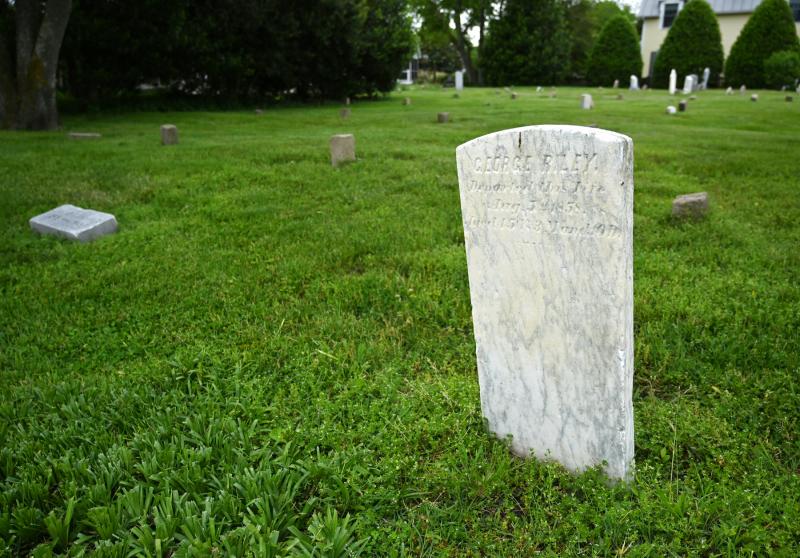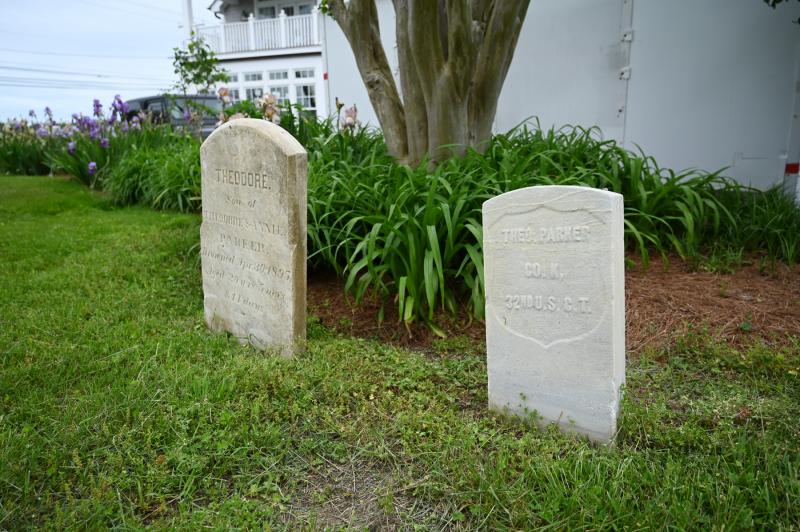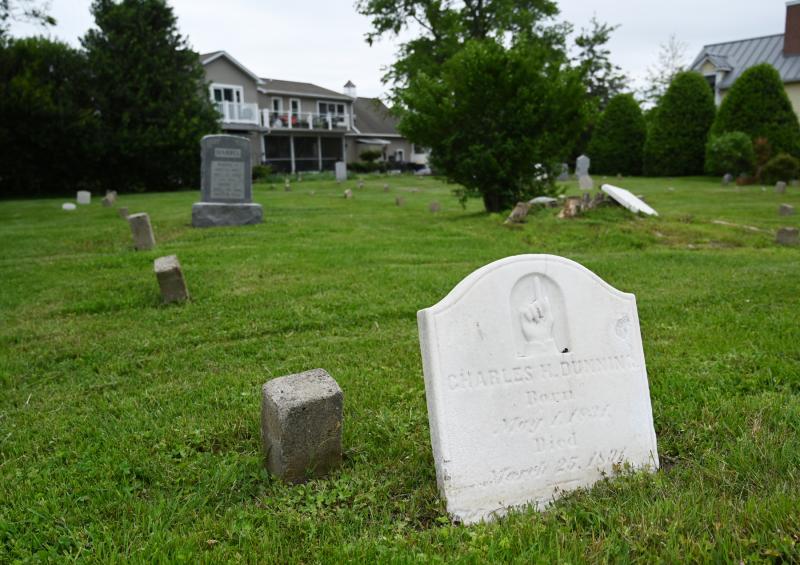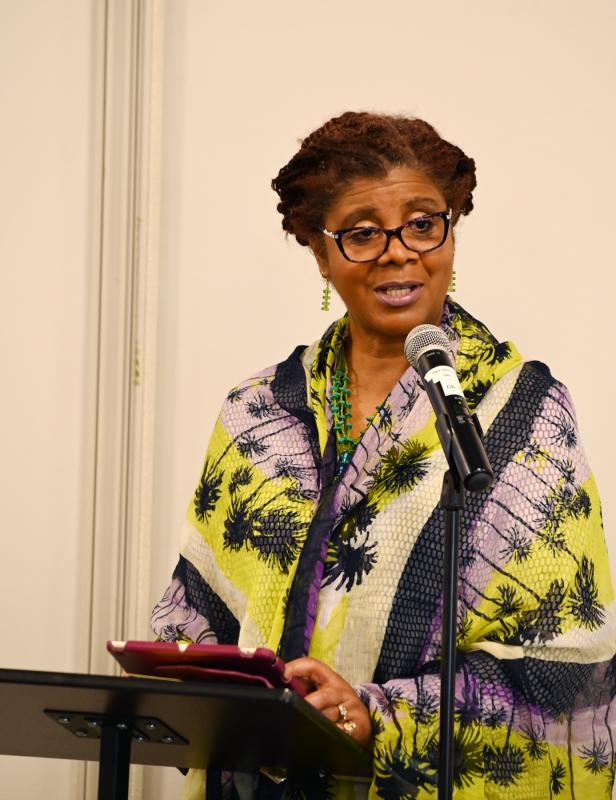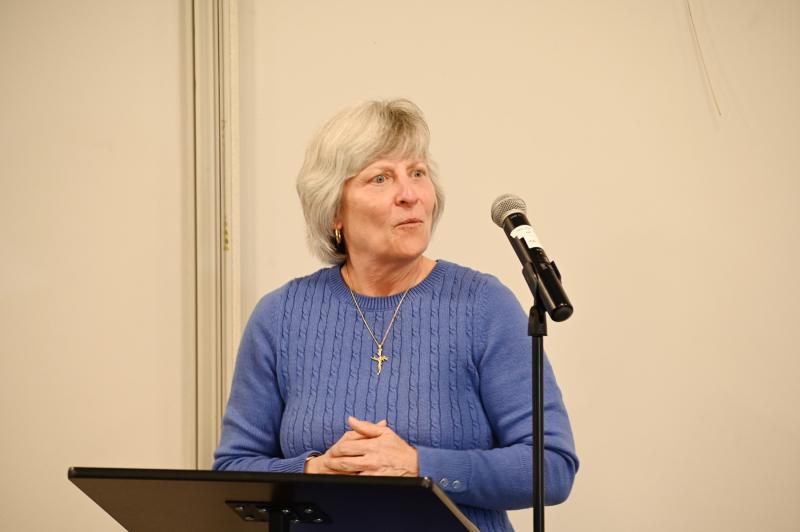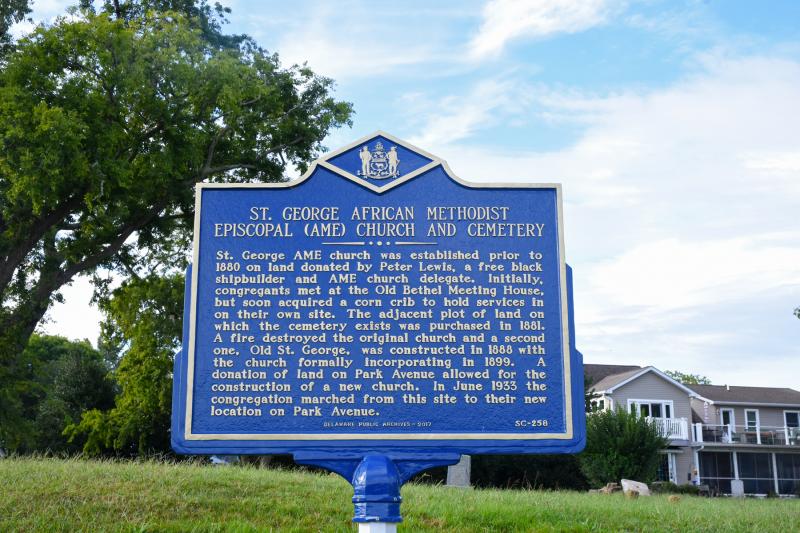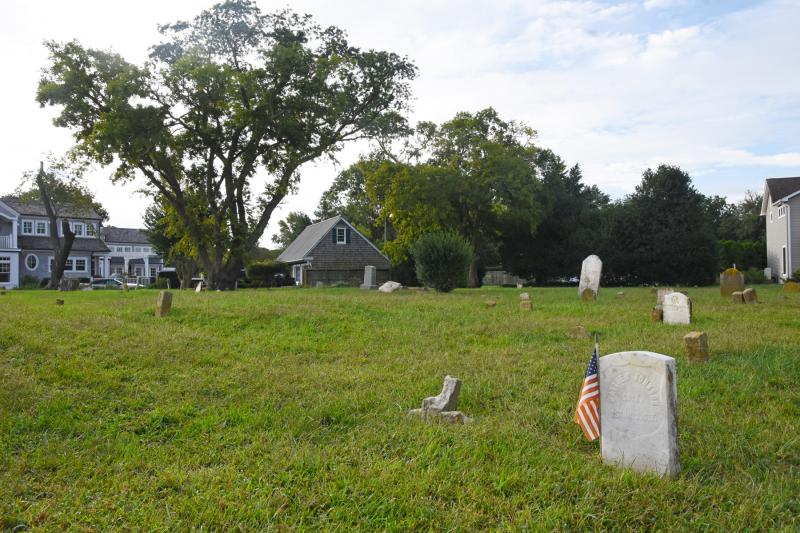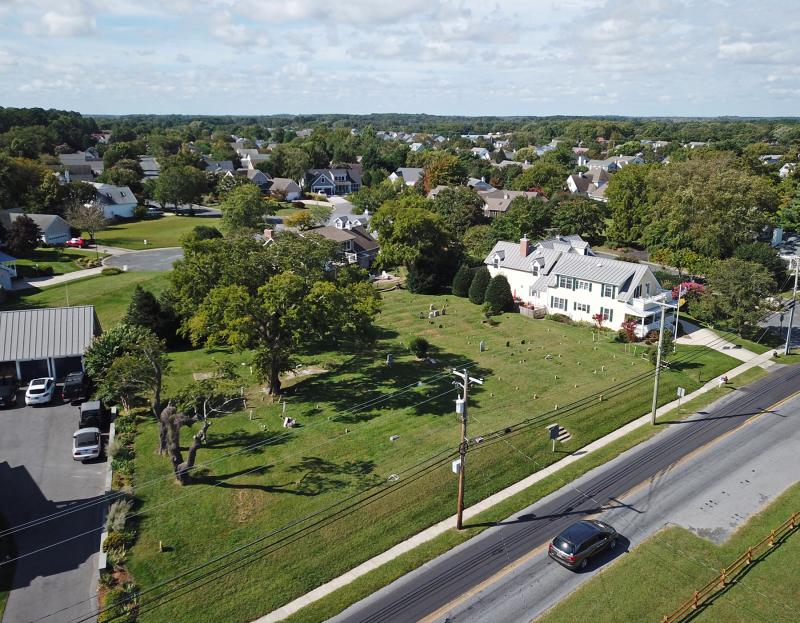Research brings African American history into focus
Many African American families with deep roots in Sussex County can trace their family tree back to someone buried in the St. George African Methodist Episcopal Church cemetery on Pilottown Road in Lewes.
Through research by locals Pam Brown and Dawnel White, more than 200 of the 500 people interred have been identified, and work continues to learn the names of more.
Brown and White have been working for more than a year, researching to learn about the lives of those buried in the cemetery.
“What they’ve found … has added tremendously to the work of the Lewes Historical Society and others to better understand and preserve African American history in Lewes,” said Trina Brown-Hicks, a member of the Lewes African American Heritage Commission and organizer of the city’s inaugural Juneteenth celebration.
The research has uncovered many previously unknown family connections, including some for Brown-Hicks. It was discovered that she is related to George Riley, who died in 1858 and may have the oldest burial site in the cemetery.
“He was alive during a very interesting time in Lewes,” said Brown during a presentation at the Greater Lewes Foundation’s annual meeting April 30. “He’s very close to where we believe the original structure of the church was. In our minds, that would be a place of honor to be buried. He has a beautiful headstone.”
Aided by donations from White and Brown, the Greater Lewes Foundation led the effort to learn more about the cemetery, hiring Edward Otter Inc. and Horsley Archaeological Prospection LLC to survey the property and employ ground-penetrating radar. Their findings were presented at the Greater Lewes Foundation’s 2021 meeting, showing 453 probable burials with 35 possible graves within the 0.61-acre parcel. With limited historical records, the number had previously been estimated at fewer than 100.
Since learning about the outstanding number of previously unknown burials, Brown and White have worked to learn more about the people interred. There are 37 family groups among the 200 people identified so far, Brown said.
“We know there’s more,” she said. “We’d like to find more people, group them into families and identify who they are.”
They’ve confirmed three members of U.S. Colored Troops are buried in the cemetery, including Theodore Parker, great-great-grandfather to Esthelda Parker Selby; George Wright, a trustee and owner of St. Paul’s Church on Fourth Street; and Matthew Johnson, who purchased land in Shipcarpenter’s Square in the 1880s.
In addition, Brown and White found many members of the Riley family tree and tried to learn as much about each individual as possible. The aforementioned George Riley was a free African American in a time when it likely wasn’t the norm. He’s great-great-grandfather to Louis Riley, who’s now in his 80s.
George Riley’s wife Elizabeth and five of their six children are buried at the St. George AME cemetery. Hester Riley, George’s daughter, is among them, along with five of her children, and many of their spouses and children. Through research, 30 relatives of Louis Riley hav been identified in the cemetery.
Louis Riley’s father, also named Louis, died as a relatively young man and was buried in the cemetery.
“Louis Riley remembers walking to school and stopping to visit his father’s grave as a young boy,” Brown said.
Brown-Hicks’ great-grandfather John Archie Lockwood was the son of Hester Riley. Marshall Lockwood, Brown-Hicks’ grandfather, started the Happy Day Club, a popular gathering place for African Americans in Sussex County. The land for the club was originally purchased by Hester’s brother Alfred Riley.
Hester’s daughter Kate Lockwood married George Smith, and they are great-grandparents of former Lewes Mayor George H.P. Smith.
“The Riley family has a rich history in Lewes that shows a dynamic, engaging African American community,” Brown said. “The families knew each other, lived near each other, married and had children.”
Brown and White’s research has found connections to many local families, including the Dunnings, Parkers, Lockwoods, Collicks, Smiths, Maulls, Burtons, Whites, Seymours, Millers, Dubois, Davenports, Hollands, Heavelows and others.
When St. George AME Cemetery became full in 1945, burials began at People’s Memorial Park on Route 1 at the Route 24 intersection.
Brown said doing the research and sharing findings with local families has been an incredible experience.
“The stories they will share will change what you think you know about Lewes and enrich your understanding of what it means to live here,” she said. “You will never see Lewes the same again. And when you pass by the cemetery on Pilottown Road, please remember the amazing people who are buried there.”
Nick Roth is the news editor. He has been with the Cape Gazette since 2012, previously covering town beats in Milton and Lewes. In addition to serving on the editorial board and handling page layout, Nick is responsible for the weekly Delaware History in Photographs feature and enjoys writing stories about the Cape Region’s history. Prior to the Cape Gazette, Nick worked for the Delmarva Media Group, including the Delaware Wave, Delaware Coast Press and Salisbury Daily Times. He also contributed to The News Journal. Originally from Boyertown, Pa., Nick attended Shippensburg University in central Pennsylvania, graduating in 2007 with a bachelor’s degree in journalism. He’s won several MDDC awards during his career for both writing and photography. In his free time, he enjoys golfing, going to the beach with his family and cheering for Philadelphia sports teams.














